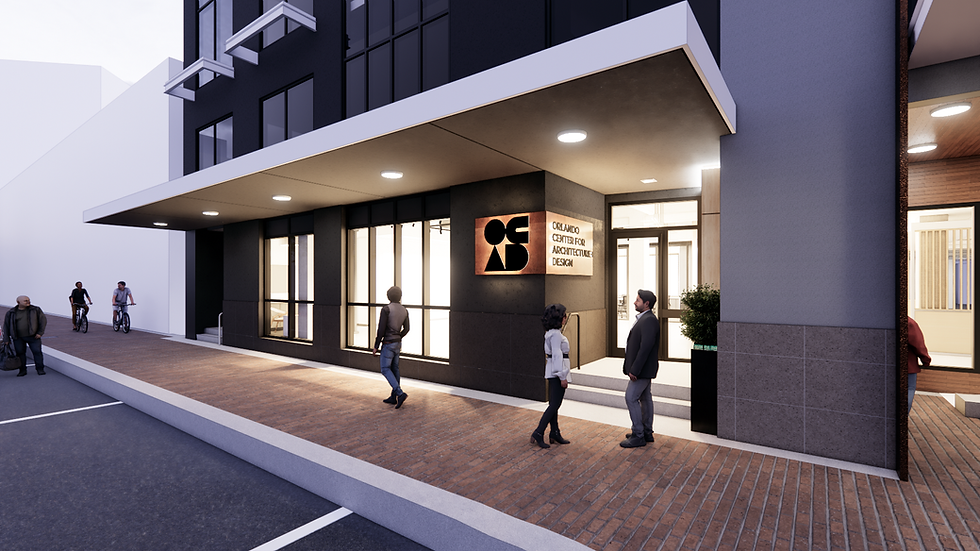The Striking Library in Winter Park
- Mar 26, 2024
- 3 min read

Comprised of a two-story library, an event center with rooftop terrace, and a drive through portico, the three pavilions form a village sharing a common formal language. Developed around biophilic design principles, three independent overlapping structures of rose-pigmented concrete rest on a raised belvedere that overlooks Lake Mendsen and connect to the network of paths and green spaces of Martin Luther King Jr. Park. The belvedere steps down behind the Events Center to provide amphitheater space for music, weddings and events.
The first noticeable feature is of the outwardly canting walls rendered in rose-tinted concrete that sets this assemblage apart from the surrounding context and is quite appropriate, seeming to grow out of the park land. A single large broad structural arch on each of the 4 sides of the three pavilions, bring in natural light and connect visually to the surrounding park. Overscale fluting fan out from the arches to the parapet on the canting concrete walls to echo the nearby palms. The entry portico ceiling is a dome springing from the arches which terminates in an oculus open to the sky.

The Winter Park Public Library boasts the same outwardly canting walls as the Smithsonian National Museum of African American History and Culture. Sir David Adjaye designed both. He is an award-winning Ghanaian-British architect with offices in Accra, London, and New York. In 2017, Adjaye was knighted by Queen Elizabeth II and was recognized as one of the 100 most influential people of the year by TIME Magazine. Adjaye is also a recipient of the 2021 RIBA Royal Gold Medal, considered one of the highest honors in British architecture. You can read more about David Adjaye’s life on their company website link above.
The library’s upper ceiling is a series of linear shallow vaults spanning completely across the square structure. From the upper level the park beyond is visible through the arches on each side of the building. The interior color scheme is inspired by the colors of the flowers in the park landscape. The library includes collections spread throughout the open plan, with four timber-lined cores which house a maker space, other technology portals, private reading rooms, an entrepreneurship center, auditorium, and continuing education classrooms, as well as Winter Park’s historical and archival collection spaces. The library is one of the locations of the James Gamble Rogers II archives, and Winter Park genealogy records.
The adjacent events center has a flexible auditorium/meeting/exhibit space with a rooftop terrace offering expansive views of the lake and park below. Both the library and the event center have signature sculptural winding stairs.

Unusual among public libraries, the Winter Park Public Library is a 501c3 non-profit organization. Begun in 1885 by nine civic minded women, the first site was the hall and front porch of Lamson House at 503 Interlachen. In 1902 a permanent library building was opened on Interlachen on land donated by the Knowles Estate. Financed by a fundraising campaign of the residents it was designed by Boston Architect, George D. Rand. In 1977 the library relocated to a new building at 460 East New England Avenue. In 1994 a third floor was added to this building. The current location replaces a previous civic center Winter Park used for events. More of the history of the library is available on their website listed above. Donations to the WPPL are encouraged to support their mission.



